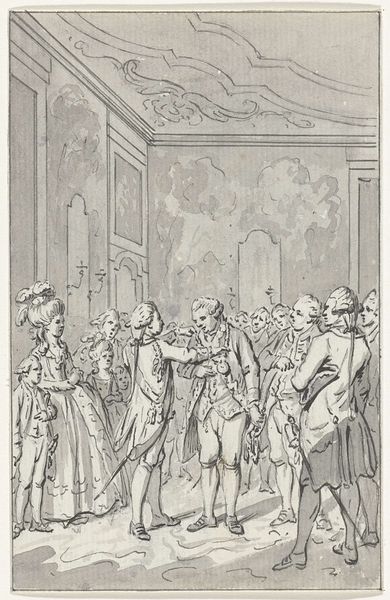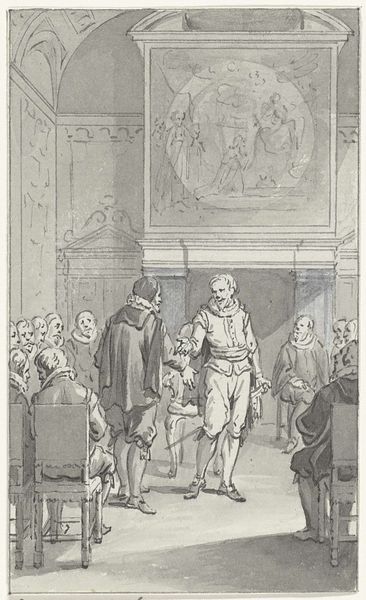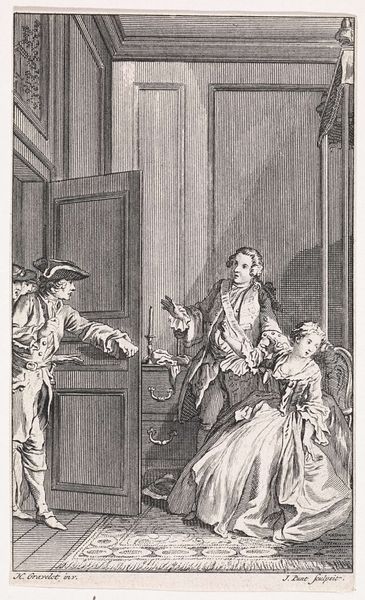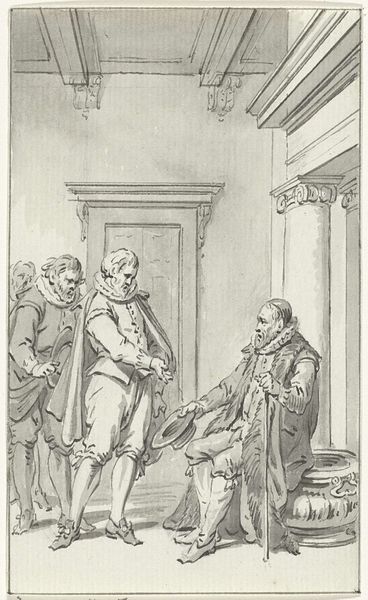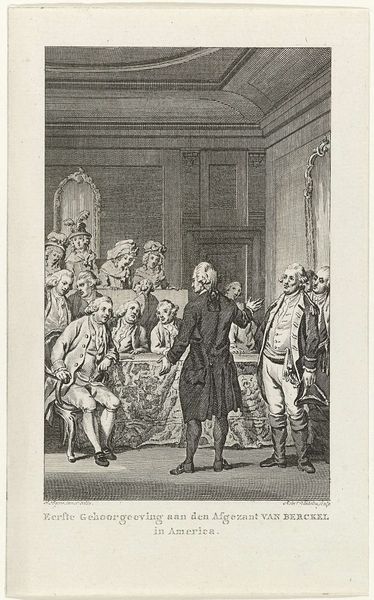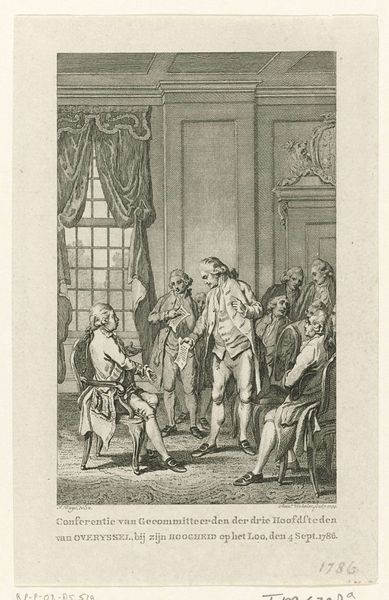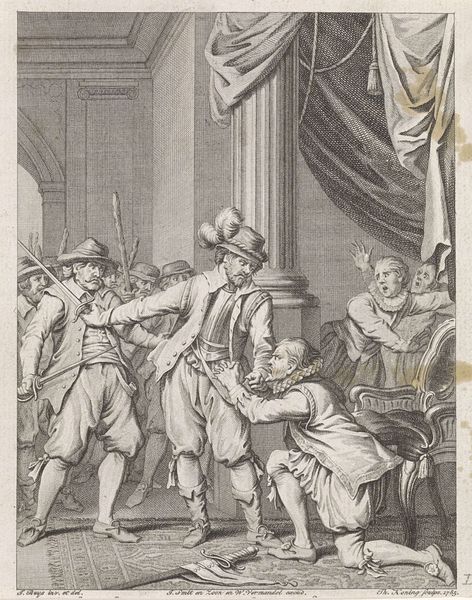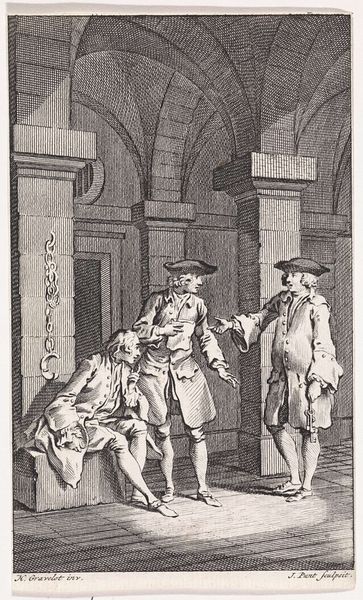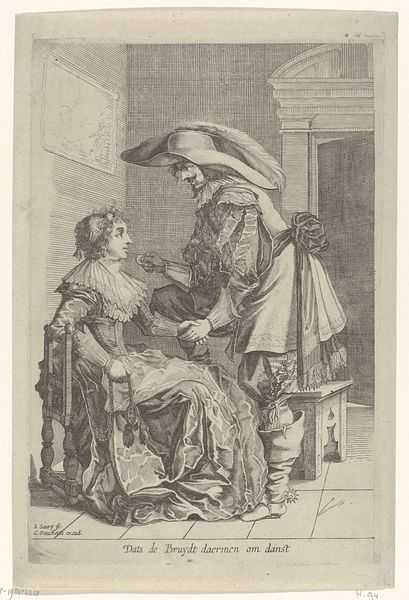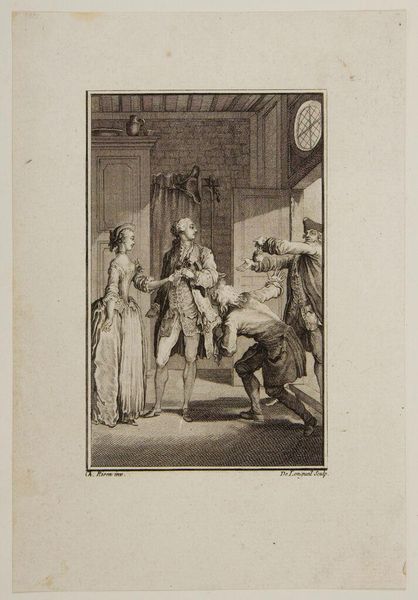
Sabine van Beieren smeekt Alva haar man, de graaf van Egmond, vrij te laten, juni 1568 1783 - 1785
0:00
0:00
drawing, ink, pen
#
portrait
#
drawing
#
neoclacissism
#
narrative-art
#
pen illustration
#
ink
#
pen-ink sketch
#
pen
#
genre-painting
#
history-painting
Dimensions: height 150 mm, width 90 mm
Copyright: Rijks Museum: Open Domain
Editor: This pen and ink drawing, "Sabine van Beieren begs Alva to release her husband, the Count of Egmond, June 1568", was created between 1783 and 1785 by Jacobus Buys, and it's currently housed in the Rijksmuseum. The texture created by the ink is really striking. How might we interpret the story the artist is trying to tell? Curator: Looking at this piece through a materialist lens, the very act of depicting this historical scene with relatively inexpensive pen and ink speaks volumes. Buys is engaging with Neoclassical ideals of heroism and sacrifice, yet the medium he chooses democratizes the image. Think about it: prints made from this drawing could circulate widely, conveying the narrative of Sabine’s plea not just to the elite but also to a broader public. How does this mass reproducibility affect our understanding of power and sympathy in this scene? Editor: That's interesting, I hadn't considered how the accessibility of the materials ties into the message. So, the choice of pen and ink, making it easier to reproduce, shifts the focus from the unique artwork to its widespread distribution? Curator: Precisely! It redirects our attention to the social and political function of the image. Who is meant to see it? And what action is it meant to inspire? Consider, too, the labor involved: the artist's hand meticulously recreating this moment of supplication, then the labour of printing and distribution. This artwork becomes a product, subject to its own network of exchange and consumption. What does Sabine’s pose tell us about power dynamics? Editor: The pose suggests the power rests with Alva. But, considering what we have just discussed, it highlights, by extension, the powerless. Seeing her on her knees is all the more impactful when one considers how many could have potentially viewed this scene. I wonder, do the textures— created using the pen and ink —affect how viewers sympathize with the figures? Curator: That's a astute point. It is not a perfect illusion of reality. It is made through labor, so it invites the audience to participate in constructing a version of the event, thereby intensifying viewers' emotional connections with it. Thanks for pointing that out! Editor: Thank you! This discussion has shown me how crucial it is to think beyond the immediate image to consider production and social circulation of an artwork!
Comments
No comments
Be the first to comment and join the conversation on the ultimate creative platform.

